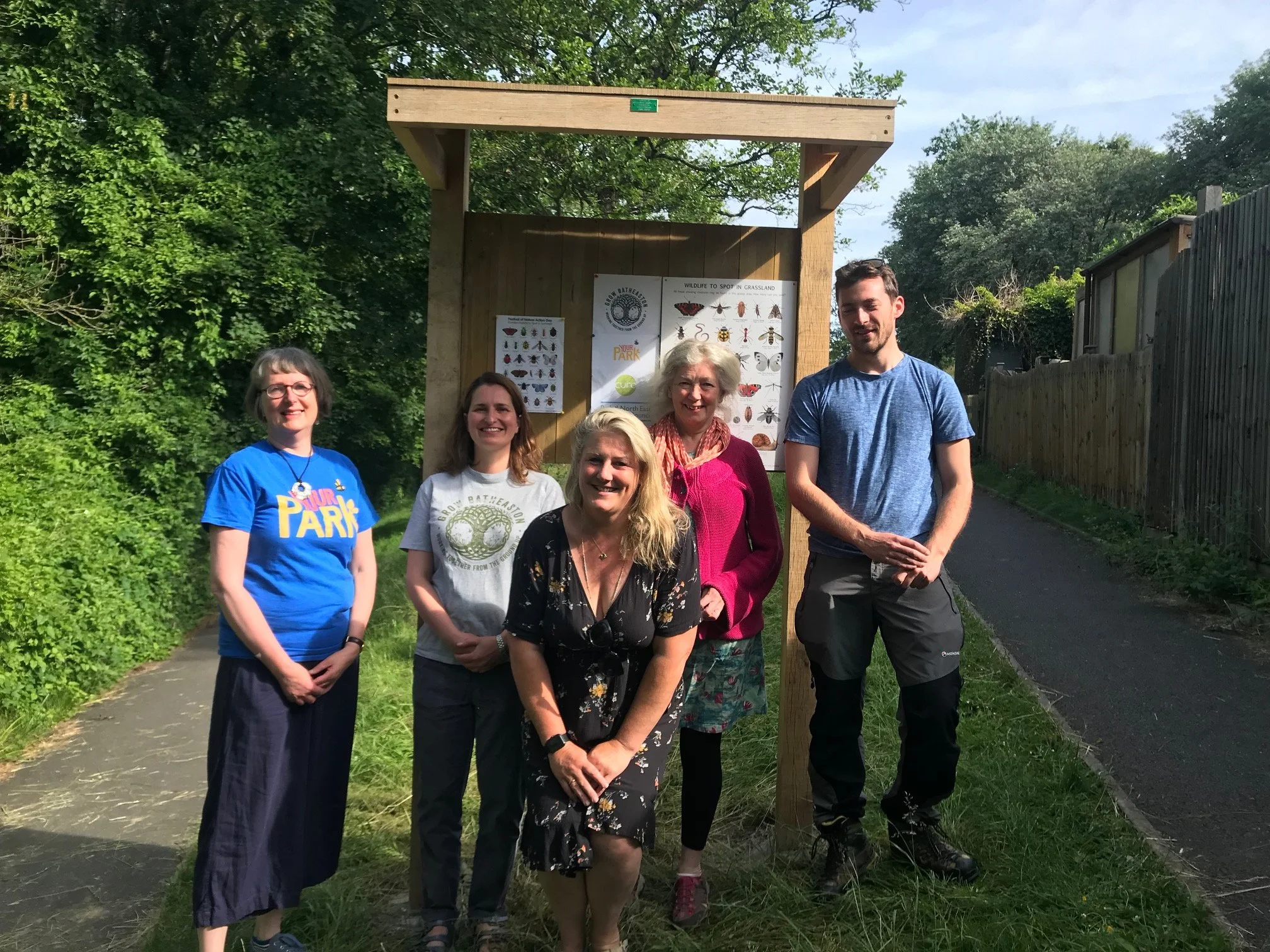Grow Batheaston celebrate the completion of several areas of wildflower meadow on the Elmhurst estate.
Ward Councillors Kevin Guy and Sarah Warren, with Grow Batheaston Team members Emily Wright, Ali Rogers and Alison Harper
Why create Meadows?
Meadows and other species-rich grass land now cover less than 1% of the UK. Inadequate protection, changing farming practices and a lack of public awareness has caused 97% to be lost in less than a century. In a world where the effects of climate change are becoming more and more prevalent increasing the amount of our species-rich grassland is vital (Plantlife.org.uk) as meadows act as a store for carbon. Meadows are an ancient habitat and benefits include providing a home for pollinators, preventing flooding and storing carbon, creating healthier animals and food.
The Meadow Mixture for Clay soils (From Emorsgate Seeds) is a mixture of the following wildflowers and grasses (common names supplied) Wildflowers- Yarrow, Agimony, Betony, Common Knapweed, Crossword, Wild Carrot, Meadowsweet, Lady’s Bedstraw, Rough Hawkbit, Oxeye Daisy (Moon Daisy) Musk Mallow, Black Medick, Ribwort Plantain, Meadow Buttercup, Yellow Rattle, Common. Sorrel, Pepper Saxifrage, Bladder Campion. Grasses - Common Bent, Sweet Vernal-grass, Quaking Grass, Crested Dogstall, Red Fescue, Smooth-stalked Meadow Grass.
Locations and permissions
The land around the estate is mixed ownership, with specific areas assigned to CURO and some B&NES responsibility.
Judy Gowenlock – York Park, Emily Wright, Ali Rogers and Alison Harper - Grow Batheaston, Joe Robson – Curo
Management of specified areas
In working with CURO and B&NES we have agreed a plan which better supports local wildlife whilst enabling residents to benefit from a greener and more nature rich environment. This provides a point of interest for locals, and helps to enable these areas to be seen as an attractive setting, not neglected or untidy, but a managed habitat that benefits wildlife as well as ourselves.
Members of the Grow Batheaston team were lucky enough to take part in a Meadow Workshop Day at the Emorsgate wildflower seed farm in Langridge. An initial approach was discussed as to what can seem a very complicated process. The soil on this site is mainly clay and so Grow Batheaston acquired a special mixture for clay soils.
The main aim in creating a suitable environment for wildflowers to thrive is to control and dissuade the growth of coarse grasses which will take over and smother the more delicate flowers. This is done by including annual yellow rattle seed in the mix, which is parasitic on grasses. Meadows take several years to develop, and we acknowledge that the results may not be instant, but we are already seeing yellow rattle and some of the other flower species coming through and enjoying the increased insect activity already.
Grow Batheaston will continue to engage the local community in the establishment of the meadow for the future enjoyment for all. Conversations had with residents so far whilst working on the orchard slope site have been very supportive.
Funding
This project was made possible by a grant from Your Park which enables us to buy the seed and plug plants and work with volunteers to scarify the areas by hand and then sow and trample in the seed mix. The grant also enabled us to purchase a new solid oak community notice board and install an information board to make residents aware of the different insect species that grasslands support illustrated beautifully by Marian Hill and donated by Bathscape.
Judy Gowenlock – Your Park, Emily Wright – Grow Batheaston, Lucy Bartlett – Bathscape, Marian Hill, Ali Rogers – Grow Batheaston, Alison Harper – Grow Batheaston.



